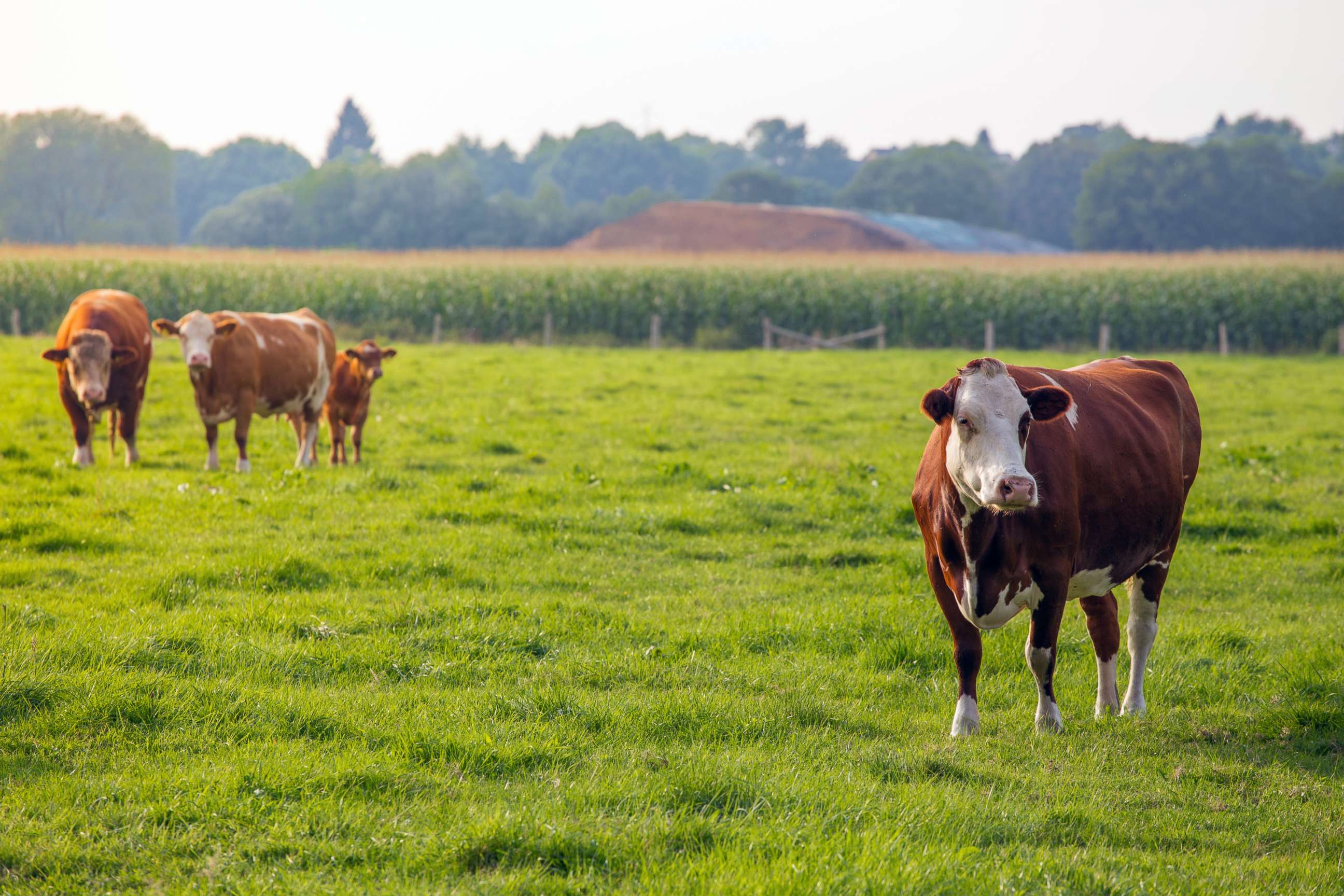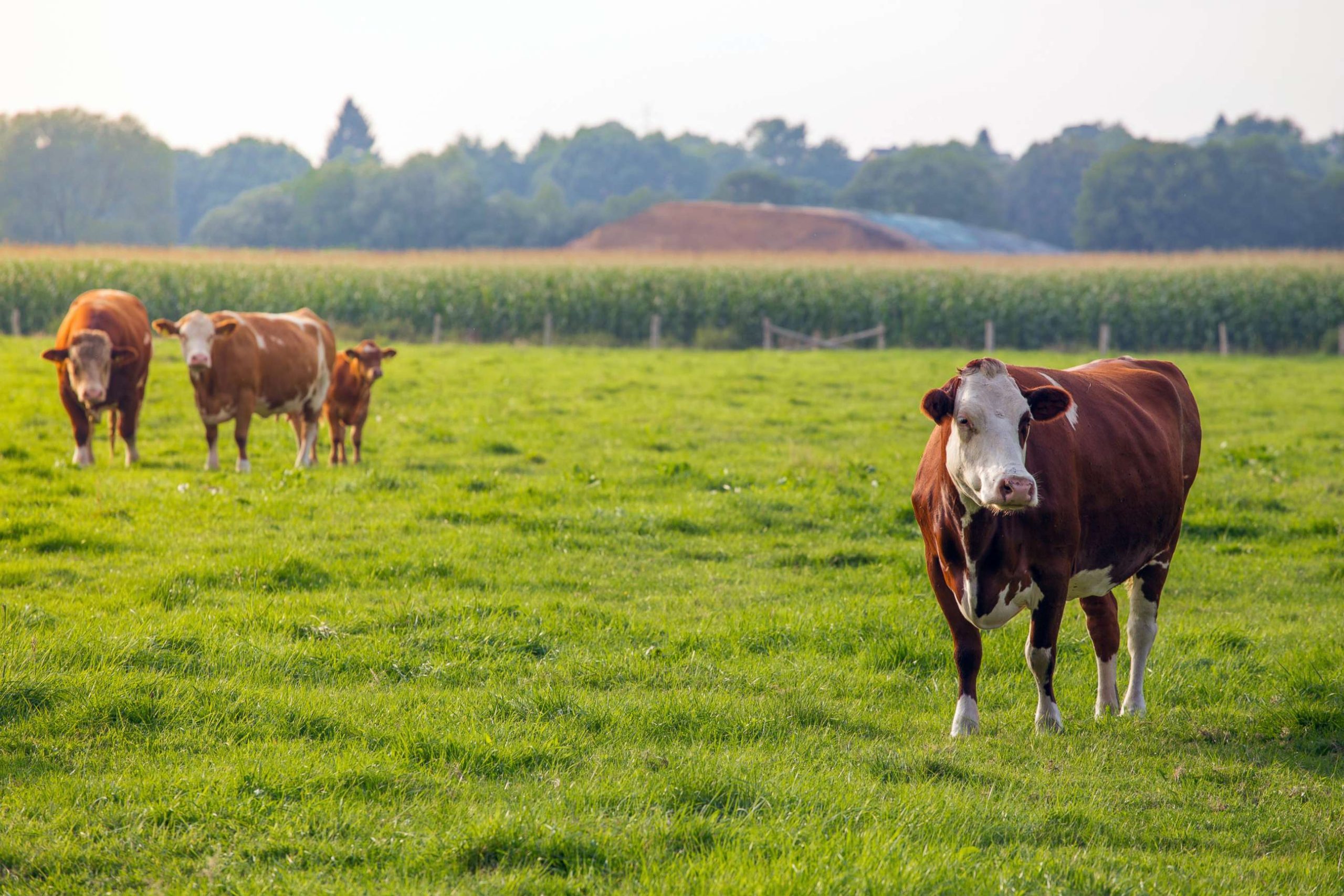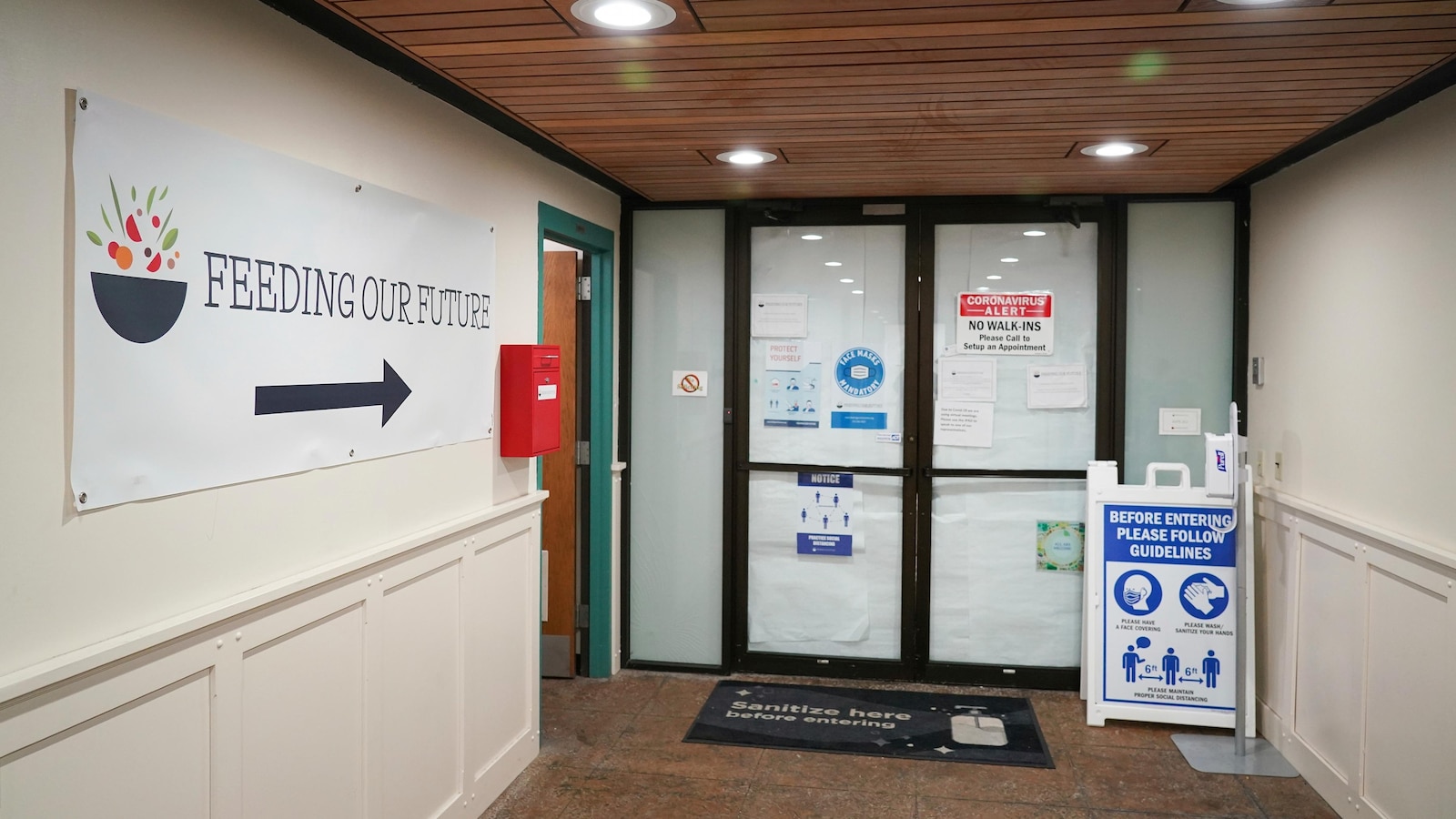The fourth human case of bird flu linked to the current dairy cow outbreak was confirmed on Wednesday in a dairy worker in Colorado, according to the Centers for Disease Control and Prevention.
Previously, one human case had been reported in Texas and two human cases reported in Michigan.
As with the previous cases, the patient is a dairy farm worker who came into contact with cows that tested positive for the H5N1 strain of bird flu, or avian influenza.
The worker was previously being monitored because of their exposure to infected cattle and reported symptoms to state health officials.
Testing results were inconclusive at the state level, but specimens forwarded to the CDC for additional testing were positive for influenza A, the federal health agency said.
The patient reported eye symptoms only. They received treatment with oseltamivir, an antiviral drug used to treat influenza, and have since recovered.

Cows are seen here in this undated file photo.
STOCK PHOTO/Getty Images
The CDC said the risk to the general public remains low, but advises people to avoid close, long or unprotected exposures to sick or dead animals. People are also advised to avoid unprotected exposure to animal excrement, litter, unpasteurized milk or materials that have been touched by — or close to — animals with suspected or confirmed bird flu.
In early March, the U.S. Department of Agriculture announced a bird flu strain that had sickened millions of birds across the U.S. was identified in several mammals this year.
A few weeks later, federal and state public health officials said they were investigating an illness among primarily older dairy cows in Kansas, New Mexico and Texas and causing symptoms including decreased lactation and low appetite.
The USDA said in a statement at the time that “there is no concern about the safety of the commercial milk supply or that this circumstance poses a risk to consumer health.”
Currently, Colorado is reporting more cases of bird flu in livestock than any other state with 23 livestock herds affected in the last 30 days as of July 1, according to a USDA interactive dashboard.
In late April, reports emerged that bird flu fragments had been found in samples of pasteurized milk. However, the fragments are inactive remnants of the virus and cannot cause infection.
Federal agencies maintain the U.S. commercial milk supply remains safe because milk is pasteurized and dairy farmers are required to dispose of any milk from sick cows, so it does not enter the supply.
In May, the CDC said in a summary that it is preparing for the “possibility of increased risk to human health” from bird flu as part of the federal government’s preparedness efforts, including filling doses of bird flu vaccine into vials to shore up the national stockpile.
The Centers for Disease Control and Prevention (CDC) has recently reported the fourth human case of bird flu connected to a dairy cow outbreak. This latest case serves as a reminder of the potential dangers posed by avian influenza and the importance of monitoring and controlling outbreaks in both animals and humans.
The outbreak began when a dairy cow in a farm in the Midwest tested positive for the H5N1 strain of avian influenza. This strain is known to be highly pathogenic and can cause severe illness in both birds and humans. The infected cow was quickly isolated and euthanized to prevent the spread of the virus to other animals.
Despite these efforts, three farm workers who had close contact with the infected cow developed symptoms of bird flu within a few days. They were promptly tested and diagnosed with the H5N1 strain of avian influenza. All three individuals are currently receiving treatment and are in stable condition.
The fourth case, however, is a concerning development as it involves a person who had no direct contact with the infected cow or the farm. This suggests that the virus may have spread beyond the immediate outbreak area, raising fears of a potential wider spread of bird flu in the community.
The CDC is working closely with local health authorities to investigate the source of this latest infection and to implement measures to prevent further transmission of the virus. This includes monitoring individuals who may have been in contact with the infected person and conducting thorough testing of animals in the surrounding area.
In the meantime, health officials are urging the public to remain vigilant and take precautions to protect themselves from avian influenza. This includes avoiding contact with sick or dead birds, practicing good hygiene, and seeking medical attention if experiencing symptoms such as fever, cough, and difficulty breathing.
While the risk of human-to-human transmission of bird flu remains low, the recent cases serve as a stark reminder of the potential dangers posed by avian influenza. It is crucial for authorities to continue monitoring and controlling outbreaks in both animals and humans to prevent further spread of the virus and protect public health.



